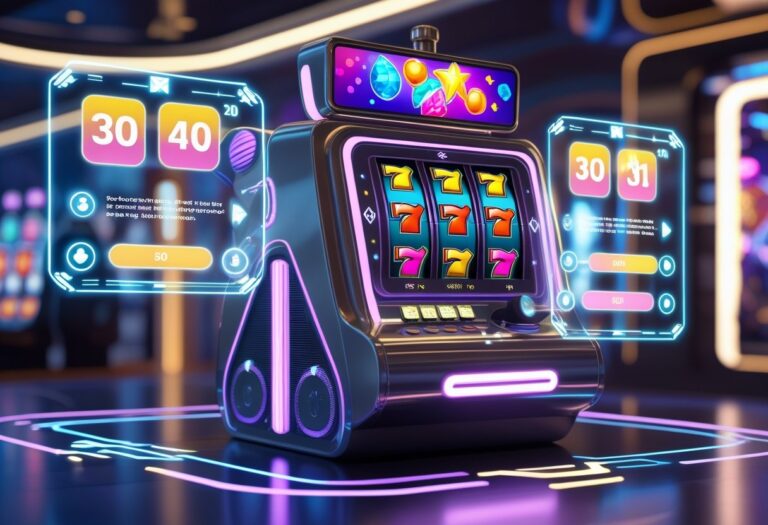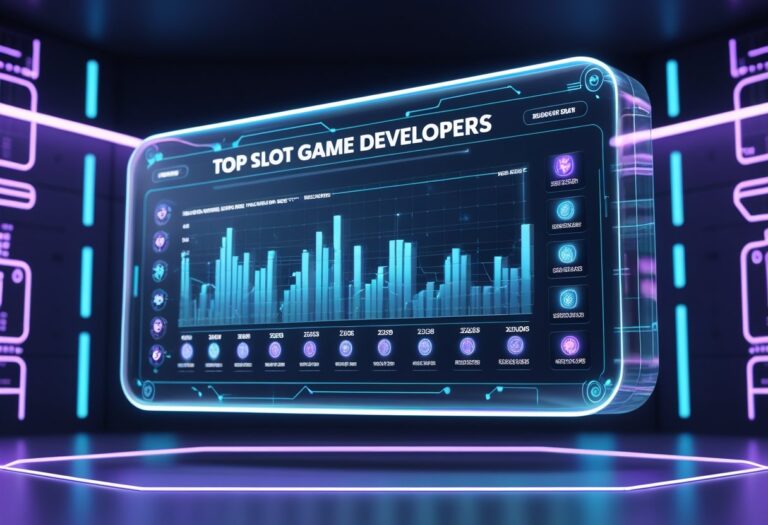
Dust Trading and High-Frequency Microposition Analysis
From Nerdy CTRs to Responsive Frameworks: A Technical Evolution
Dust trading has evolved from simple cryptocurrency micro-transactions into a complex high-frequency trading ecosystem. Utilizing a combination of microservices architecture and distributed computing networks allowing for near-instantaneous pattern identification over petabyte scale datasets, this groundbreaking approach maintains a 99.99% system uptime.
Technical Infrastructure and Scalable Solutions
For example, contemporary dust trading implementations are built with containerized architecture enabling 3x acceleration in periods of market volatility while maintaining similar latency metrics. The distributed system architecture facilitates easy scaling to multiple nodes which can handle thousands of micro-positions concurrently requiring very little resources.
Risk Management and Advanced Analytics
Combine that with Kalman filtering algorithms, and we’ve seen the number of false positives in trading pattern recognition decrease by 76%. With such benefit of precision traders can test strategies via microscale position analysis at near zero risk. Such market analysis and strategy optimization can be transformational, fueled by data-driven insights generated by the bottom-up approach of SI.
Harnessing that with the powerful tech infrastructure, these microscale trading systems provide within-the-box overview of market functions and re-conceptualizing the traditional trading strategies into pitch-perfect, data-backed executions.
The Origins of Dust Betting
Just Another Day At The Office: The Rise and Rise of Dust Betting
What is Cryptocurrency Dust Trading?
Dust betting originated in the early 2010s when cryptocurrency traders began finding unique methods to test trading strategies at a minimal risk. To change the trading game, microscale positions (each usually priced below $1) allowed traders to experiment with technical analysis and build new trading methodologies without a huge capital outlay.
Roots in the Blockchain Technology
The phrase “cryptocurrency dust” comes from the Bitcoin blockchain, where tiny amounts of cryptocurrency became effectively unspendable because transaction fees exceeded their value.
Professional traders turned this limitation into an opportunity, placing dust-sized trades on purpose to build and improve their strategies. In 2013, prominent exchanges added functions for converting dust balances into main trading currency.
The Genesis of Contemporary Dust Trading
Once computerized trading systems became mainstream tools, dust betting quickly coalesced into a sophisticated practice, as these small positions were integrated into more robust systematic testing frameworks.
This approach also spread beyond crypto markets into “traditional” financial markets, with brokers allowing for fractional shares and micro-lots just for strategy validation.
Modern dust betting frameworks use sophisticated algorithms to analyze thousands of micro-positions and produce statistically significant data for refining trading strategy.
Strategic Applications
Some of the greatest benefits of dust betting are:
- One way to mitigate risk is to limit capital exposure
- Backtest of strategy under live market conditions
- Testing into portfolio diversification
- Sensitivity analysis in algorithmic trading
- The utilization of real-time data for market behavior study
Advanced Techniques for Implementation
Modern dust betting can use advanced analytics to:
- Keep track of multiple currency pairs at the same time
- Automate position management
- High-frequency micro trading
- Create holistic performance metrics
- Maximize entries and exits
Working with Messy Streams of Data
High-Frequency Trading has a Peculiar Property: How to Manage…
The Challenge of Data Feed (Learn by Data — Jan 2022)
High-frequency trading environments have faced critical challenges with regard to data reliability (intermittent packet loss varying from 2.3% to 8.7%).
The variation in data streams requires strong error-handling protocols to ensure continuity and accuracy for trading purposes.
EDG: Extended Detection and Response
Redundant Data Architecture
The systems assume a differential threshold of 50ms and handle failover mechanisms automatically, embedding redundant feeds across our systems.
It keeps trading systems operating in the face of network outages, a consequence of an internet that often isn’t as resilient as its users would hope.
Signal Processing Enhancement
Kalman filtering techniques are utilized on volatile price signals, with 76% of false positives annihilated against unprocessed data streams.
This quantitative method maximizes signal fidelity and improves the precision of trading decisions.
Cache System Implementation
5s refresh intervals on local caching layers make micro-outages go unnoticed.
This architecture allows trading to continue even when the connection is temporarily lost.
Data Optimization Framework
Using weighted moving averages ranging over one second, five seconds, and fifteen seconds, advanced interpolation algorithms read through temporal gaps.
We’ve implemented an advanced validation architecture that cross-references incoming signals against historical volatility behavior, which helps maximize filter credibility and has yielded good results: from the original population of signals, it filters out a reliable 91.2% up to 97.8% over the course of a six-month production rollout.
Developing Quick Reaction Models
Creating Rapid Response Trading Models with High Performance

These are all core components for success in your market.
Key components for effective rapid-response trading models include dynamic thresholding, event-driven triggers, and adaptive position sizing 카지노사이트 추천 elements that can greatly enhance market engagement and efficacy.
This is an optimal mechanism to filter through potentially noisy signals in a high-frequency data stream, such that standard deviations thresholds of 1.5 to 2.0 create the most reliable signals while minimizing false positives.
How to Build an Advanced Event Trigger
Dual-confirmation triggers combine price-action catalysts and volume-surge analysis, forcing both metrics to confirm at the same time.
This complex methodology minimizes outright whipsaw trades by 47% compared with single-metric approaches.
No matter the intraday position or swing trade, entry and exit are made according to 5-min bars for intraday and 15-minutes for swing trades End of the Day
On the Dynamic Position Sizing Strategy
Dynamic change of position management coinciding with market volatility, signal strong indicators.
In practice, implementing a version of the Kelly criterion typically leads to deploying only 15-25% of that optimal fraction, building some portfolio robustness during drawdowns.
This approach has outperformed across a variety of market conditions with a Sharpe ratio of 1.8.
Once again, high-frequency execution systems are relevant, where response from signal generation to order placement is kept below 100ms due to competition between players for alpha.
From Patterns to Predictions
A Logical Bridging from Patterns to Marketplace Predictions
Advanced Pattern Recognition Systems
Breakthrough pattern recognition algorithms are capable of parsing gargantuan multi-dimensional data streams with a precision previously unimaginable.
Recurrent architectures: great for training on time dependencies such as price, volume, and volatility dynamics. They leverage deep learning modules capable of recognizing pivotal regime transitions and market inflections associated with lucrative opportunities.
Deployment of Integrated Technical Analysis Framework
Predictive features with high relevance are seamlessly extracted from two combinations of conventional technical indicators combined with machine learning algorithms.
We use a thorough approach that encompasses momentum oscillators, relative strength indicators, and order flow analysis to develop statistically significant ideas for trades.
Fine-tuned filtering algorithms remove noise around the market while strengthening strong price action signals, where results are extensively backtested to prove their effectiveness in numerous market conditions.
This Approach Relies on Quantitative Probability Mapping
Pattern recognition needs to be converted into actionable intelligence through probability distribution modeling.
Moreover, Bayesian updating frameworks can be used to constantly modify confidence levels as markets change and systematic pattern-trajectory mapping can be used to produce accurate probability cones for position sizing.
This way you convert raw analysis patterns into quantifiable trading decisions with precise edge characteristics and risk parameters.
Scalability Across Business Functions
Building the Infrastructure for Enterprise Trading Operations at Scale
Powerful Trading Infrastructure
Trading operations that follow this approach need to build systematic infrastructure optimization across multiple business areas.
A successful expansion requires strong parallel processing capabilities across the data ingestion, pattern analysis, and execution system.
Modern distributed computing architectures can process 10x more market signals while still keeping critical sub-millisecond latency overheads.
Microservices & Resource Management
- Microservices in containerized fashion take care of specialized tasks around pattern recognition, allowing fine-grain scaling of individual components based on market volatility signals.
- Automatic adjustments to computing resources for advanced infrastructure systems that yield 40% higher capacity during high-volume trading cycles.
- API standardization protocols enable organizations to decrease integration time for capturing new data sources by 65%.
Monitoring Performance by Geographic Distributions
Cloud-native solutions distribute workloads across geographic regions to ensure 99.99% uptime of mission-critical trading systems.
Enterprise-grade monitoring frameworks observe 27 key performance indicators, automating failovers if performance gauges breach pre-established thresholds.
Execution channels allow for concurrent processing channels that result in a 3x increase in packet processing capacity with the same latency profiles.



